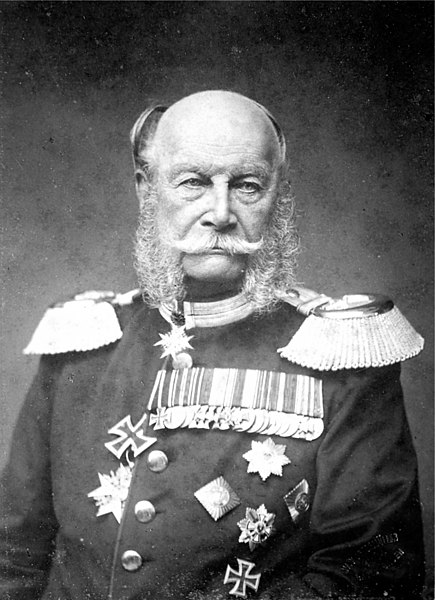William I, German Emperor
William I, or Wilhelm I, was King of Prussia from 1861 and German Emperor from 1871 until his death in 1888. A member of the House of Hohenzollern, he was the first head of state of a united Germany. He was de facto head of state of Prussia from 1858, when he became regent for his brother Frederick William IV. During the reign of his grandson Wilhelm II, he was known as Wilhelm the Great.
William I in 1884
Queen Louise of Prussia with her two eldest sons (later King Frederick William IV of Prussia and the first German Emperor William I), circa 1808
Prince Wilhelm at age 13, c. 1810
Portrait of Prince Wilhelm, by Frederick Richard Say, c. 1848
The German Emperor was the official title of the head of state and hereditary ruler of the German Empire. A specifically chosen term, it was introduced with the 1 January 1871 constitution and lasted until the official abdication of Wilhelm II on 9 November 1918. The Holy Roman Emperor is sometimes also called "German Emperor" when the historical context is clear, as derived from the Holy Roman Empire's official name of "Holy Roman Empire of the German Nation" from 1512.
Last to reign Wilhelm II 15 June 1888 – 9 November 1918
Proclamation of Wilhelm I as German Emperor in the Hall of Mirrors in Versailles, France (painting by Anton von Werner)
Image: Kaiser Wilhelm I.
Image: Kaiser Wilhelm II of Germany 1902(cropped)








